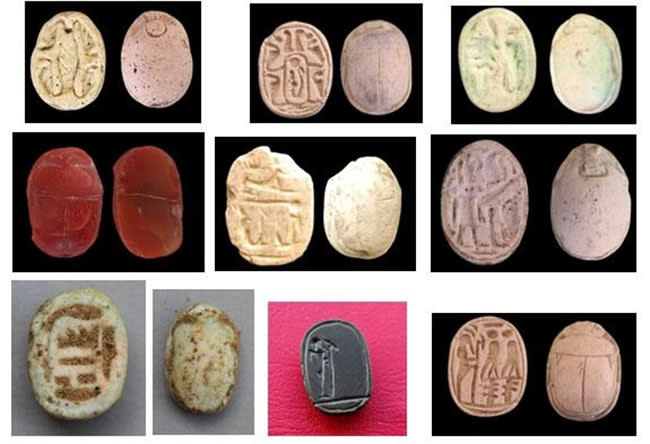A team of archaeologists in Egypt discovered a sword with hieroglyphs showing the name of Pharaoh Ramesses II. The weapon was one of many artifacts from the well-stocked archaeological site of Tel Al-Abqain near the coast of northwestern Egypt.
The sword is made of bronze and bears the name of King Ramesses II, who ruled Egypt from approximately 1279 to 1213 BCE. Ramesses II had the second-longest reign in Egyptian history, marked by a building boom and wars with the Hittites and a group of invaders called the Sea Peoples. The sword was unearthed near an area that may have been invaded by enemies. The team also found two inscriptions on limestone blocks. One of the blocks has a hieroglyphic inscription mentioning Ramesses II, and the other has an inscription for an official named “Bay.”
[Related: ‘Screaming woman’ may solve a 3,500-year-old mummy mystery.]
Several religious or spiritual artifacts were also discovered, including the remains of an intact cow. According to Egypt’s Ministry of Tourism and Antiquities, cows “symbolized strength, abundance and prosperity, as cows were revered as heavenly gods” in ancient Egypt. Other cow bones were found near the ovens.
The team also found several scarabs, depictions of a dung beetle that was considered a symbol of the morning sun. One scarab had the inscription “Amun – Lord of the Heavens.” Other scarabs bear inscriptions honoring various deities and flowers. More jewelry was unearthed, including half of a bronze ring with the inscription “Amun Horakhty,” necklaces and several semi-precious stones called carnelian in the shape of pomegranate seeds.

The objects were discovered among the 3,200-year-old remains of a military barracks that served as a defense against enemy invasion during the New Kingdom. It features several mud-brick architectural structures that housed soldiers, weapons and the food they needed to survive.
[Related: Ancient Egyptian scribes suffered bone damage from working long hours in hunched positions.]
According to Mohamed Ismail Khaled, secretary general of the Supreme Council for Archaeology, it was an important military base from 1550 to 1070 BC on the Western War Road. It was built as a fortress to protect Egypt’s northwestern border from attacks by Libyan tribes and Sea Peoples. This collection of tribes waged war in the eastern Mediterranean in the Late Bronze Age.
The Sea Peoples are held responsible for the destruction of the Hittite Empire. However, due to a sudden break in record keeping caused by these invasions, the exact extent and origin of their actions remains unknown. Some of the main evidence for the Sea Peoples is based on Egyptian texts and artwork, which is considered one-sided. Other evidence comes from Hittite sources and archaeological data.
Given the extremely well-stocked nature of the barracks, the soldiers may have succeeded in protecting the invasion. However, archaeologists are still unsure why the complex was abandoned by the army with so many objects left behind.




